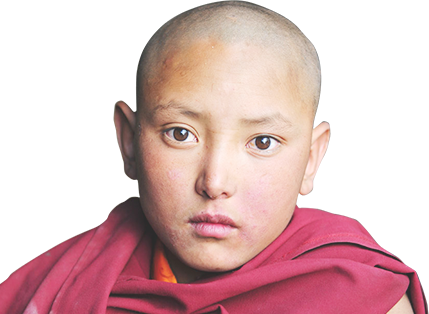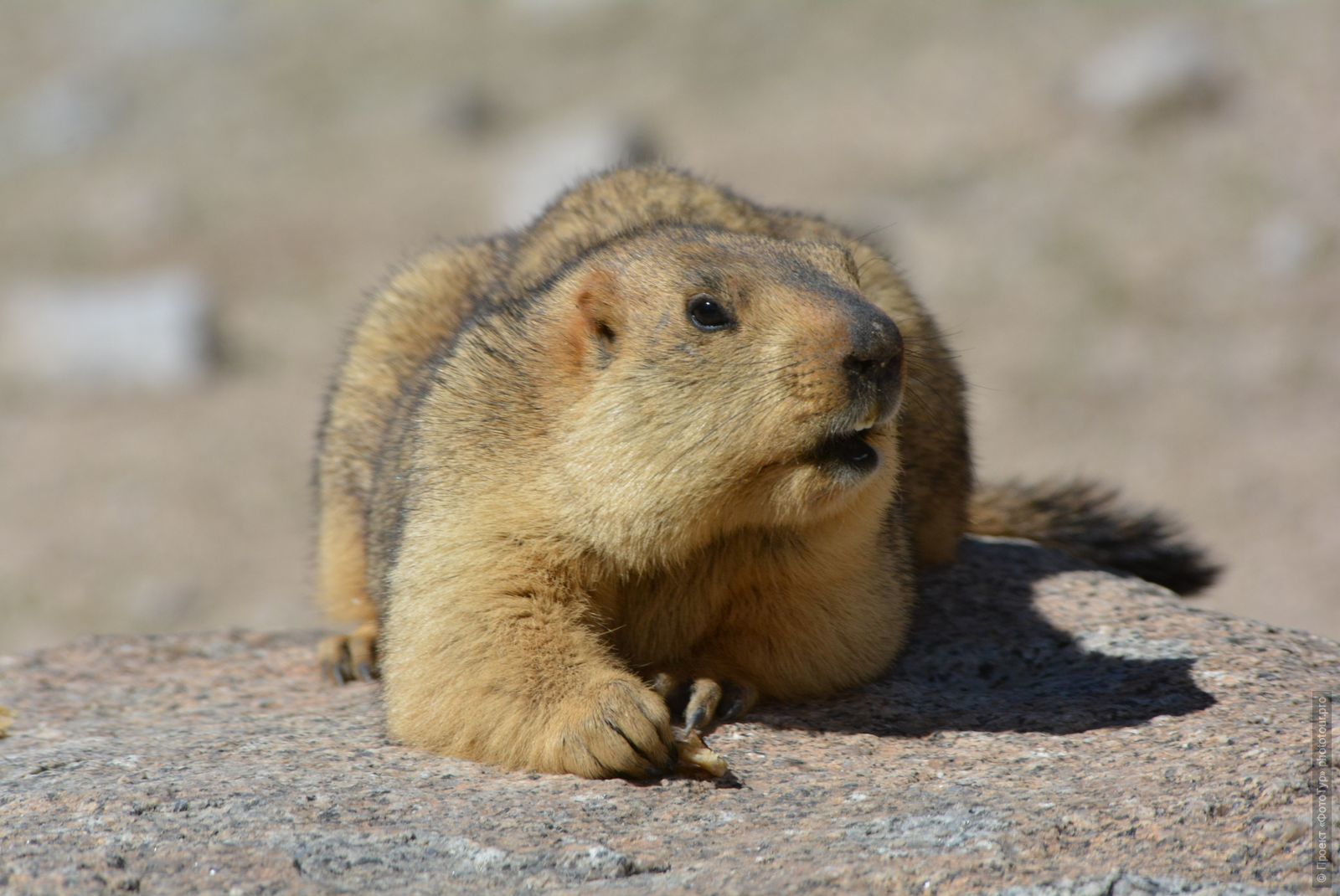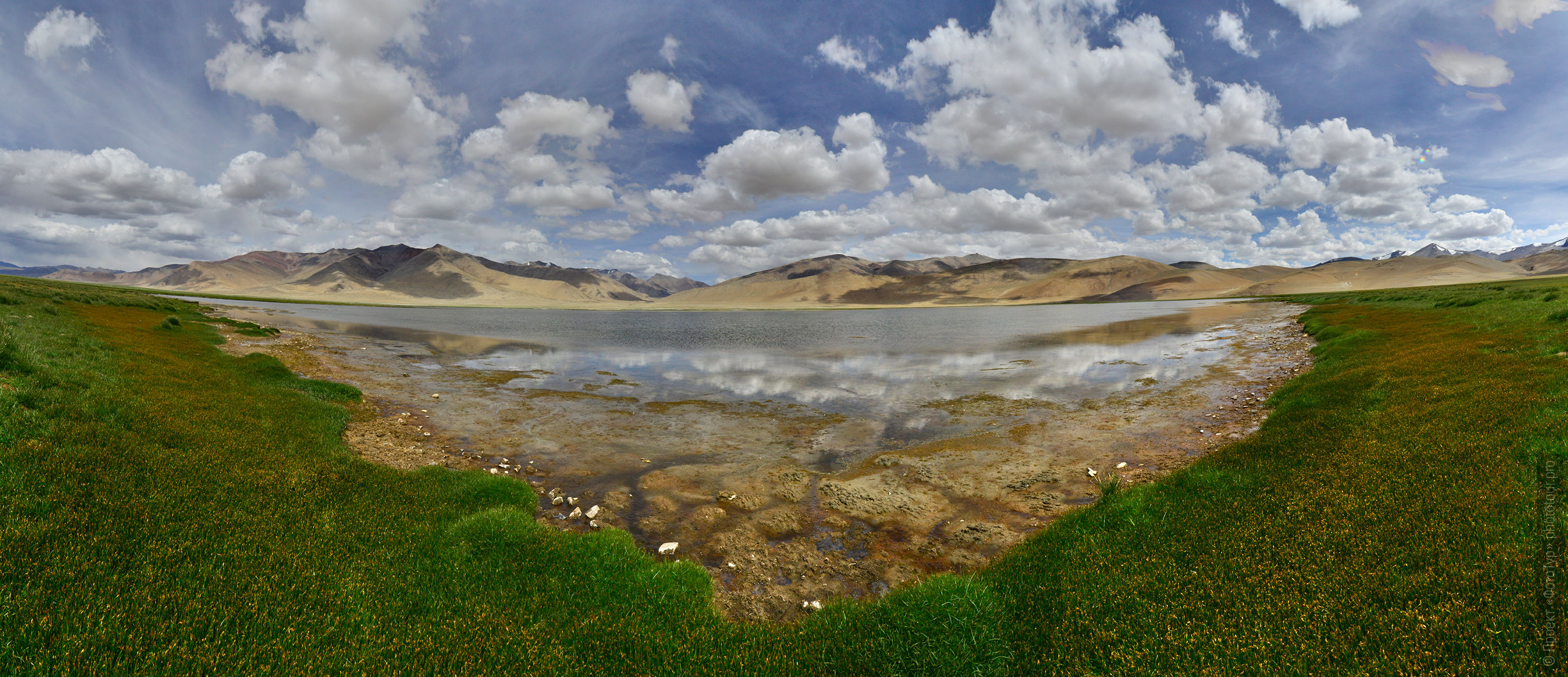The Booking of your participation in any journey takes place in three stages:
First step: Filling the application form for participation in the tour. Be sure to include your full name, We work officially and all accounts are registered. Please write your contact so that we have the communication wit you. After your application come to our website - the site administrator will send you a bill at your name for a advance of the tour. Maximum response time: 6 hours. Usually responsible for 1 hour.
Second stage: The reservation to participate in any tour takes place when you make the advance payment of 30% of the tour price to the account of an Indian travel company INCREDIBLE HIMALAYA. The advance is transferred via bank payment systems in any bank, account details will be sent by the administrator to e-mail of participants after getting the application form for participation.
ATTENTION Booking the tour takes place only when the advance payment transferred. If, after receiving of the invoice for advance payment, you do not make a payment within three working days, your application form for participation is automatically canceled by site. If you still want to participate in the tour, you have to apply the form again. When we receive an advance on our bank account we sent payment receipts confirming your participation, as well as a contract for the provision of travel services on this tour. The administrator sends you the electronic copies of receipts and contracts with digital signature and seal by e-mail and if necessary - to the postal address - the original documents. The remaining amount is payable as ayou arrive at the beginning of the trip, in India.
The third stage: Preparing for the journey. We also have a verbal communication on Skype with members of our travels. 2 weeks before the tour we gather the whole group in Skype and discuss preparations for the journey. Also welcome verbal individual consultations on Skype, it helps us to answer all your questions maximized. Because the most of the year we are in India, the main communication with us is Skype.
Attention! You don't need to register on our site to join the tour. If you are unable to fill the application form, please just send your application in letter (free form) - by mail: [email protected]
Attention! If you have not received a response to your letter within 6 hours (maximum response time for a request), please look at the spam folder. Perhaps, our letter got there by mistake. We always reply to requests in a maximally short period of time.
Photo tour Tibet Lakes, Ladakh, Tibet, Northern India.
Day 1, June 27: Arrival in Delhi. Flight of Delhi - Leh. Acclimatization.
Day 2, June 28: Walk through the Ladakh valley. Buddhist monastery of Basgo Gonpa.
Day 3, June 29: Leh - Tangse moving. Lake Pangong.
Day 4, June 30: Sashikul Gustor Festival in the monastery Sasikul Gonpa. Pangong.
Day 5, July 1: Sashikul Gustor Festival in the monastery Sasikul Gonpa. Tangse - Leh.
Day 6, July 2: Day of free photography in Leh. Old city.
Day 7, July 3: Leh - Lake Kyagar Tso, Lake Tso Moriri, Karzok village.
Day 8, July 4: The village of Karzok. Lake Tso Moriri. Settlements of nomads ChongPa.
Day 9, July 5: Lake Tso Moriri, the Valley of Geysers, Lake Tso Kar.
Day 10, July 6: Lake Tso Kar, Lake Tso Startsapuk (Tso Startsapuk).
Day 11, July 7: Lake Tso Kar - Rupshu Valley - Tanglang Pass La Rumce (Bordovoye Gorge) - Leh.
Day 12, July 8: Flight of Leh - Delhi. Homecoming.
Reservation of places for participation in the Lake Tour in Ladakh occurs when an advance payment of $ 130 is made to the settlement account of the Indian travel company PROJECT PHOTOTOUR PRIVATE LIMITED.
The advance payment is transferred by the participant of the tour with the help of payment banking systems in any bank, the details of the settlement account are sent by the administrator to the participant's email after receiving an application for participation in the photo tour.
You can pay in advance: Methods of Payment.
When making an advance payment, the participant is sent a payment receipt and a contract for the provision of travel services, confirming the deposit of money and the reservation of your participation in the trip.
The rest of the amount is paid by the participant upon arrival at the place of the beginning of the tour, in this case - upon arrival in Leh, Ladakh.
1. Transfers from / to the airport to the hotel in Leh.
2. Movement along the entire route (from the gangway to the gangplank) in comfortable cars.
3. Accommodation in double rooms in hotels, guest houses and camping along the route of the photo tour.
It is possible to stay in a single room, an additional charge of 242 $ for the entire itinerary.
4. Information support by the organizers of the PhotoTour Project from the beginning to the end of the tour.
5. Excursion support guides of the PhotoTour Project.
6. Russian-speaking guide-photographer and thematic consultations on travel photography, genre photography on Dance Tsam and photography in the highlands of Ladakh.
7. Participation in the Buddhist mystery Sashikul Gustor, Lake Pangong.
8. Lecture-introduction to the culture of Tibetan Buddhism: Dance Tsam.
9. Lecture on landscape photography in Ladakh: Features of landscape photography in Ladakh, Tibet.
10. All taxes and fees on the route of the photo tour.
1. Flight to Delhi airport from the country of residence and back.
ATTENTION!
Flight from Europe to Delhi and back - very inexpensive:
for today, air tickets are about $ 300 in both directions.
2. Flight Delhi - Leh - Delhi. The estimated cost of air tickets from $ 80 to $ 120.
Attention!
These air tickets are redeemed immediately after making an advance payment for participating in the trip:
administrators of PhotoTour Project provide assistance to phototourists in the purchase of these air tickets at the minimum cost.
It should also be noted that the earlier flights are bought, the cheaper they are.
3. Tourist visa to India $ 75, processed online 7 days before arrival in India.
Information on registration of tourist visa to India.
4. Entrance tickets to the monasteries, about $ 10 for the whole time.
5. The cost of the permissions to the closed border zones of Ladakh (Lake Pangong, Tso Moriri), $ 20 per Permit.
6. Eating during a photo tour: about $ 140 for the entire trip.
7. Medical insurance: it is issued by each participant individually.
8. Tipping drivers and the English-speaking tour guide at a rate of $ 1 per day.
9. Everything that is not indicated in the list "The cost of a photo tour is included".
Phototour Tibet Lakes is designed for photographers and travelers from the world.
TEMPLATE FOR THE PARTICIPATION IN THE PHOTOTURE TIBET LAKE IS POSSIBLE UP TO 10 JUNE 2018.
But recording in the photo tour can be terminated earlier - as soon as a group of 10 people is typed.
This photo tour is designed for a small group.
If you want to go to the photo tour of Tibet Ozerny, please book in advance.
The minimum number of participants in the group of this photo tour is 10 people.
The maximum number of participants in the group of this photo tour is 10 people.
Phototour comfortable level:
- in Leh: cozy warm hotel with hot water, with bathroom and toilet in the room, wi-fi in the room.
- on Lake Pangong Tso: a luxurious guest house, showers and toilets in each room.
- in the village of Karzok, Lake Tso Moriri: a luxury hotel with a view of the lake, a toilet and a shower in the room, hot water, periodically there is wi-fi in the room.
- on Lake Tso Kar: a nice guest house-camping, stone buildings, warm rooms, toilet and shower - in a special insulated building (nothing better on Tso Kare).
For those who want to ask questions about organizing and participating in the photo tour of Tibet Ozerny, please contact us:
Phones for communication:
+7 968 007 74 47 (Russia) - Ilona Kryzhanovskaya, Project Manager, PhotoTour, India.
+ 91 94 19 274 735 (India) - Ilona Kryzhanovskaya, Project Manager, PhotoTour, India.
+7 909 990 90 73 (Moscow, Russia)) - Tatyana Golovina, representative of PhotoTour Project in Moscow.
skype:
il-il-il (or search by email [email protected]) - Ilona Kryzhanovskaya, Project Manager, PhotoTour.
tati_2017 - Tatyana Golovina, representative of PhotoTour Project in Moscow.
Brasilia3090 - Nina Lozenko, Project Director, PhotoTour.
e-mail:
[email protected] - Ilona Kryzhanovskaya, Project Manager, PhotoTour
On the photo tour of Tibet Lakes there is a team of organizers:
Ilona Kryzhanovskaya: photographer, ethnographer, ethnographic photography, genre photography, subcultural practices, myth construction in photography.
Sonam Rinchen is a partner and co-founder of the PhotoTour Project.
Pravsh Shuba: the head of the team of the Photo Tour guides.
Nina Lozenko: director-administrator of the PhotoTour Project.
Our local Ladakh-speaking English-speaking culture guides, the team of PhotoTour Project.
The team of drivers-guides throughout the route of the photo tour.
For participants of the photo tour, Tibet Ozerny is recommended for compulsory reading,
Here there are answers to all questions regarding the conditions of the tour and preparation for it:
Recommendations and rules for photo travelers and travelers on Ladakh, Zanskar and Spiti Valley (Small Tibet).
In terms of individual preparation for photography in a photo tour, Tibet Ozerny recommends that you read and read the following articles:
Photos of Ladakh, Small Tibet, India - are the places on which the route of the tour passes.
View pictures of Lake Tz Moriri.
View photos of Lake Tso Car. and About Love: Lake Tso Kar, Ladakh.
View photos of Lake Pangong Tso.
See pictures from Tibet.
July Lake Tour in small Tibet, 2012.
July 2013: The July photo tour of the Lakes of Small Tibet: Pangong Tso, Tso Kar, Tso Moriri passed and ended.
July 2014: Photo report on the tour Tibet Lakes, July 2014.
Sergei Pobegaev: the film "Ladakh" following the results of the photo tour of Tibet-Ozerny, July 2014.
July 2015: A large photo tour of the Ladakh lakes, 26.07. - 08/08/2015.
Articles on Buddhist Mysteries with the performance of the Dance of Tsam in Ladakh.
ACCENT PHOTOTURE: ARTISTIC PHOTOGRAPHY OF HIGH-HEAVEN LAKES LADAKHA.
Phototour will be very interesting for photographers of any level - from pros and amateurs, and just to active tourists.
For professional photographers, this journey is a great opportunity to collect material for an individual exhibition.
For amateur photographers - this is a good practical school of continuous photography in places where you can take photos around the clock.
For tourists - this is an incredible journey, analogues to which you will not find not one tour operator. And, as a bonus, master the basics of travel photography.
This photo tour of the high-mountain lakes of Small Tibet - was a hit of the seasons 2012, 2013, 2014, 2015, 2016 and 2017 and objectively is the most spectacular and bright photo of Ladakh.
This year we have expanded the program of the photo tour, adding photography at distant lakes - Tso Starpak and Kyagar Tso.
Moreover: the program of the photo tour Tibet Ozerny is extremely saturated - for 12 days there is not one day off, all days will be extremely filled with photography.
The main key points of this trip are:
1. Five high-altitude lakes Ladakha (Small Tibet): Pangong Tso, Tso Kar, Tso Moriri, Tso Startsapak and Kyagar Tso - places are not just beautiful, places are fantastic.
2. Valley of high-mountain geysers between the lakes of Tso Moriri and Tso Kara.
3. Remote villages of highland nomadic shepherds of Ladakh Chongpa.
4. Bordovoe Gorge - one of the most fantastic places in the beauty of Ladakh.
5. Ethnographic photography in Buddhist monasteries of Ladakh.
6. Ethnographic and genre photography on the Buddhist mystery Sashikul Gustor.
7. Free photography: the tour program is designed in such a way that participants can take pictures at a time in the individual schedule.
8. According to its program, photo tours are as close as possible to individual travel: a small group - only 10 people.
And more, the most important thing:
LAKE WILL BE VERY MUCH!
We described in as detailed a detailed tour of Tibet Lakes each day.
All photos are taken by us and are a real representation of the places we will visit, and at the time when we go there.
Photos are clickable to a large size.
In the description of each day of the tour, the total mileage per day is indicated.
Day 1, June 27: Arrival in Delhi. Flight of Delhi - Leh. Acclimatization.
Arrival at New Delhi International Airport (India) from the country of residence.
We issue a visa, get luggage and move to a free shuttle from the international terminal D3 of New Delhi airport to the terminal of domestic airlines D1:
The bus runs between terminals every 15 minutes, the journey takes 10-15 minutes.
This is a common practice in our photo tours in Ladakh:
flights on which participants of our tours arrive at the airport of New Delhi, usually arrive at the terminal D3 from 2 to 5 am, immediately move to the shuttle at the terminal D1 and one of the morning flights fly to Leh.
Flights to Delhi - Leh Birim flight so that the time reserve between the external and domestic flights was at least 3-4 hours.
In the terminal D1 we check-in for Delhi-Leh flight, flight to Leh, 1 hour 20 minutes.
The Delhi-Leh air flight itself is an exciting photo-shoot for photographers, the plane flies over the most beautiful peaks of the Himalayas.
It is highly recommended that when buying air tickets immediately book places near the portholes.
For those who want to take pictures of mountain ranges from an airplane, the most suitable seats are from 25F to 30F and from 25A to 30A.
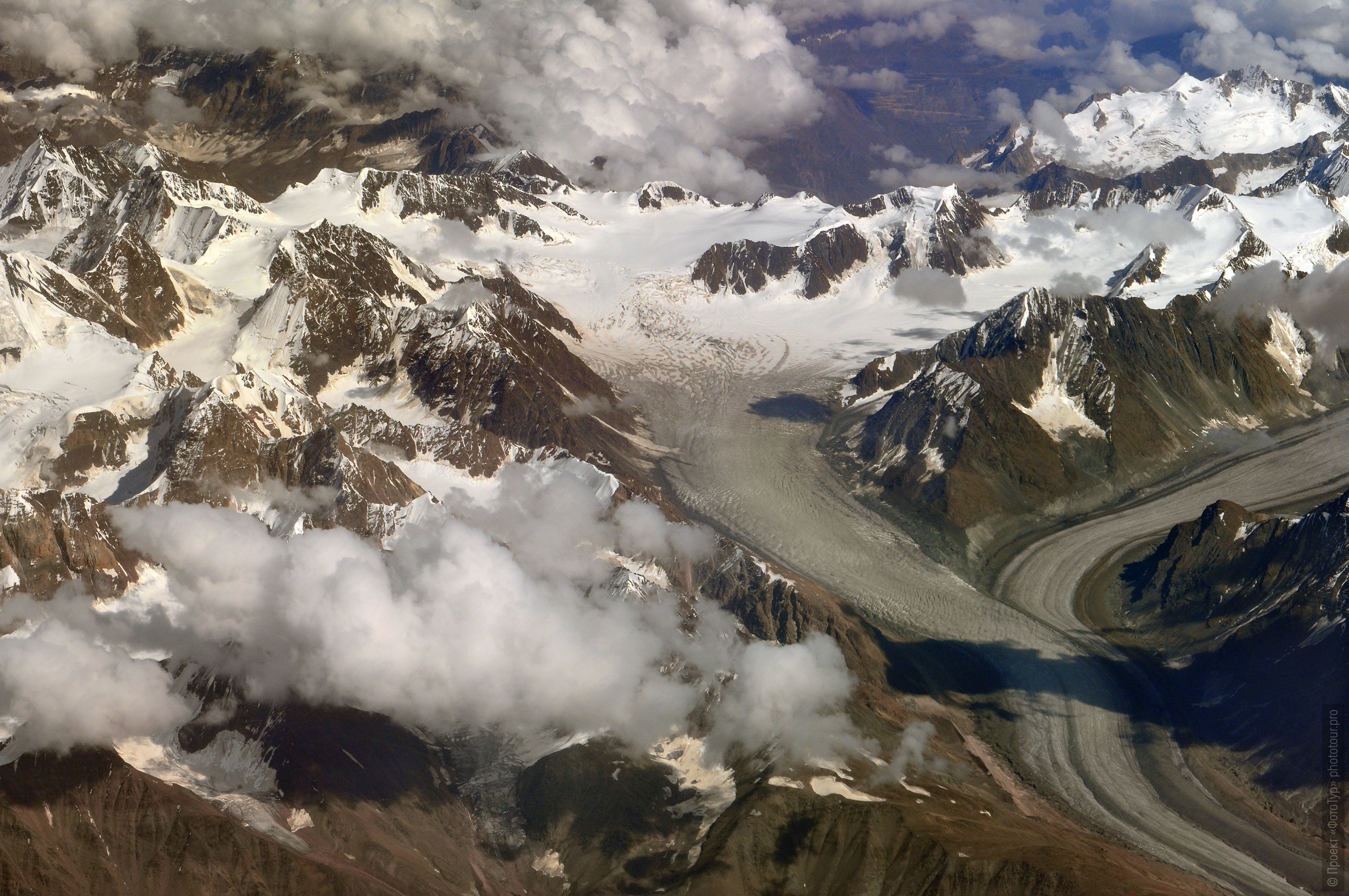
The plane literally sneaks, moves along the gorge in the middle of the mountain chains.
From the height, we will first see the Ladakh lakes, to which all our journey is drawn, for example, the majestic lake of Tso Moriri:
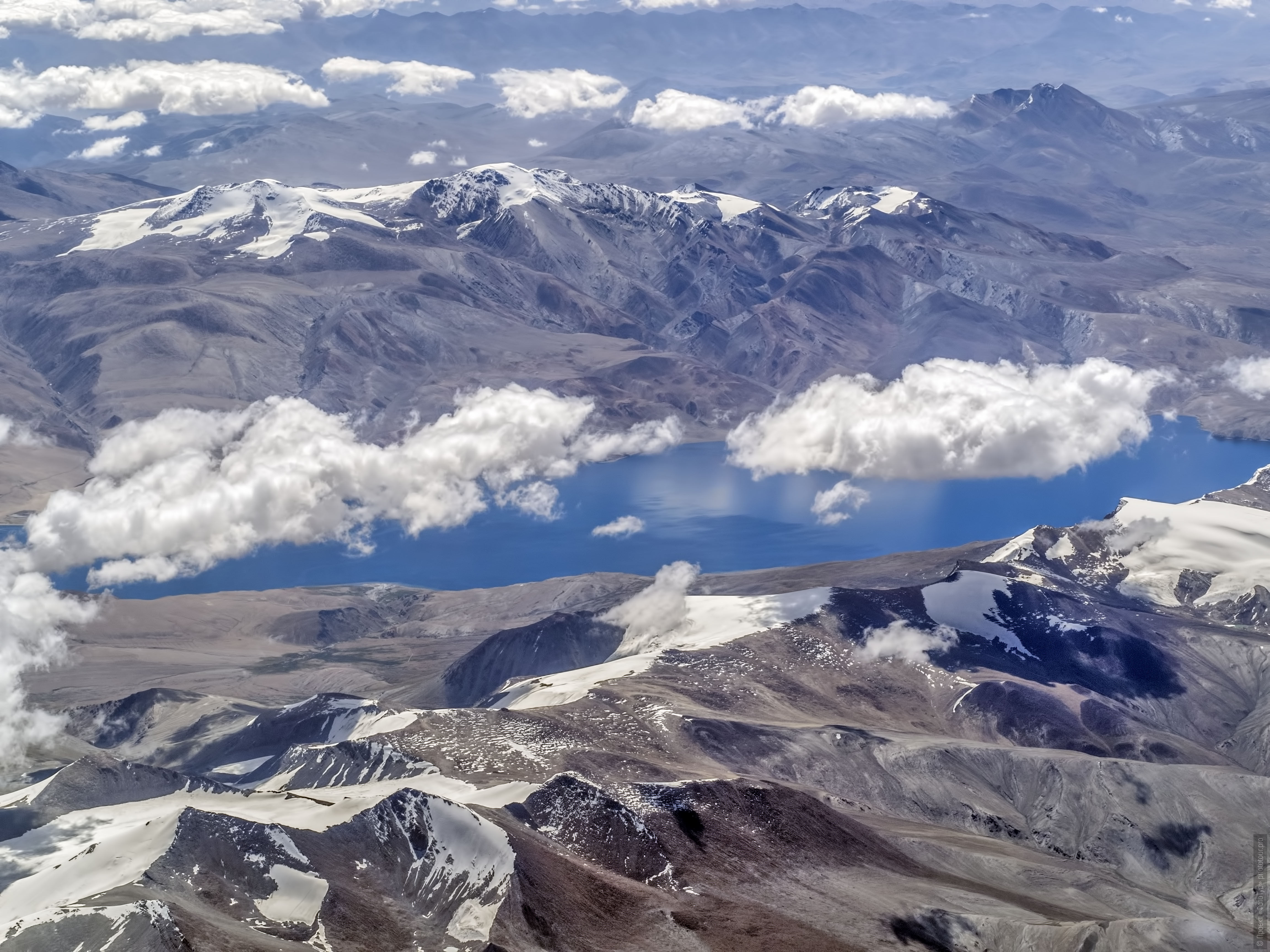
We arrive in Ladakh, the plane makes a beautiful turn over the valley (an excellent time for photography) and lands at the only airport in the valley - in the city of Leh.
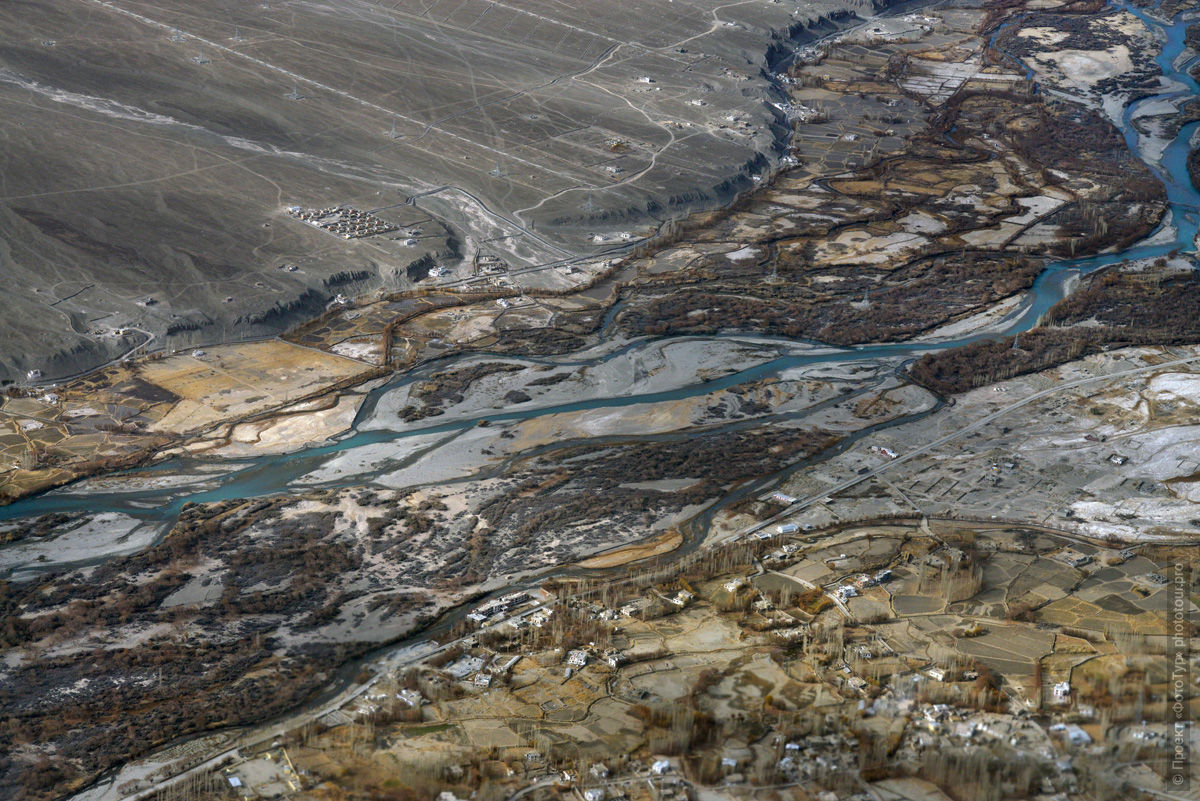
Arrival in Leh: at the airport of Lech immediately at the exit of the participants meets a guide with a sign PHOTOTOUR.
Transfer to the hotel, breakfast.
Leh is at an altitude of 3600 m.
And on the first day of our tour it is very important for participants to undergo the correct altitude acclimatization:
we are instructed on correct behavior at altitude, drink a lot of liquid, the first hours on arrival rest at the hotel.
After acclimatization rest in the hotel we go on leisurely adaptive walk through the narrow streets of Old Lech:
get acquainted with the infrastructure of the city, learn to navigate in Leh, we walk along the old part of the city.

The old town of Lech was included in the list of the World Monuments Fund of UNESCO.
We'll finish our walk in the wonderful café-restaurant Penguin, where our first dinner in Lech will take place.
In the evening a lecture on the introduction into culture and customs of Tibetan Buddhism.
Hotel in Leh.
Day 2, 28 June: A walk through the Ladakh valley. Buddhist monastery of Basgo Gonpa, about 60 km.
Today we go to our first car acclimatization walk along the Ladakh valley, to the beautiful Buddhist monastery of Basgo Gonpa.
On the way, we are waiting for incredible landscapes, as, for example, this is the place of the confluence of the rivers Indus and Zanskar.
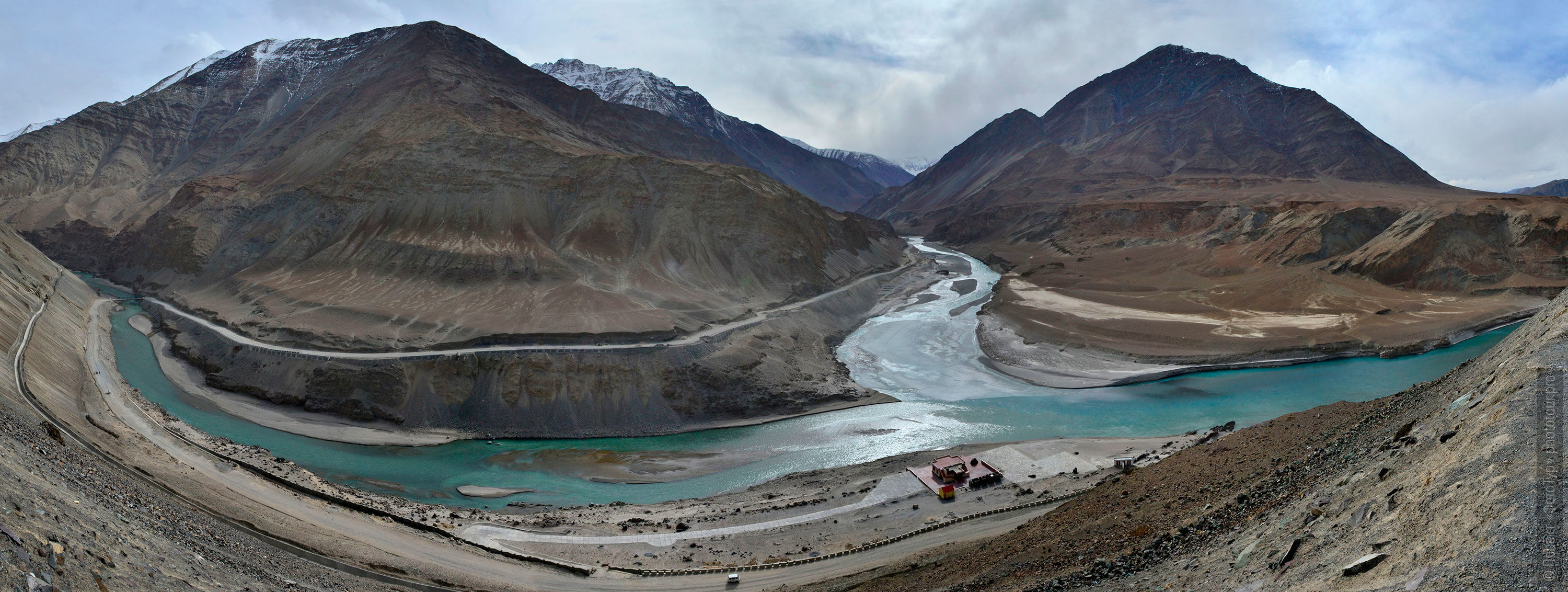
In general, the whole valley of the middle reaches of the Indus River is very unusual:
mountains here are colorful, bright saturated tones - burgundy, green, red, purple, yellow - and all this beauty is mixed in almost vertical mountain folds.
The rocks themselves are quite soft - sandstone, clay shale, which allowed the weathering processes for many millennia to create here incredible forms of relief.
And in the middle of all this - white Buddhist stupas.
Impressive.
We will have lunch on the way - in the village of Nimo, in the local tavern, we will try real Ladakh food - very tasty: samos and air cakes from tsampa with boiled peas in small bowls.
In Nyima they cook very tasty, people from all over the valley flock to this tavern.
And after breakfast - we will continue our journey to the Buddhist monastery of Basgo Gonpa.
Buddhist Monastery Basgo, Basgo Gompa - built in 1680 by the rulers of the Buddhist dynasty Namgyal.
The village of Basgo itself was known from antiquity and is mentioned in Ladakh Chronicles as a political and cultural center and the former capital of Lower Ladakh.
The monastery is famous for its unique frescoes of the 16th century and the Buddha statue.
Basgo Gompa stands on steep rocks, no, probably more correctly this way:
Basgo Gonpa has grown up on the tops of steep cliffs that are really part of its basement and literally hangs - hovering in the air over the village of Basgo.
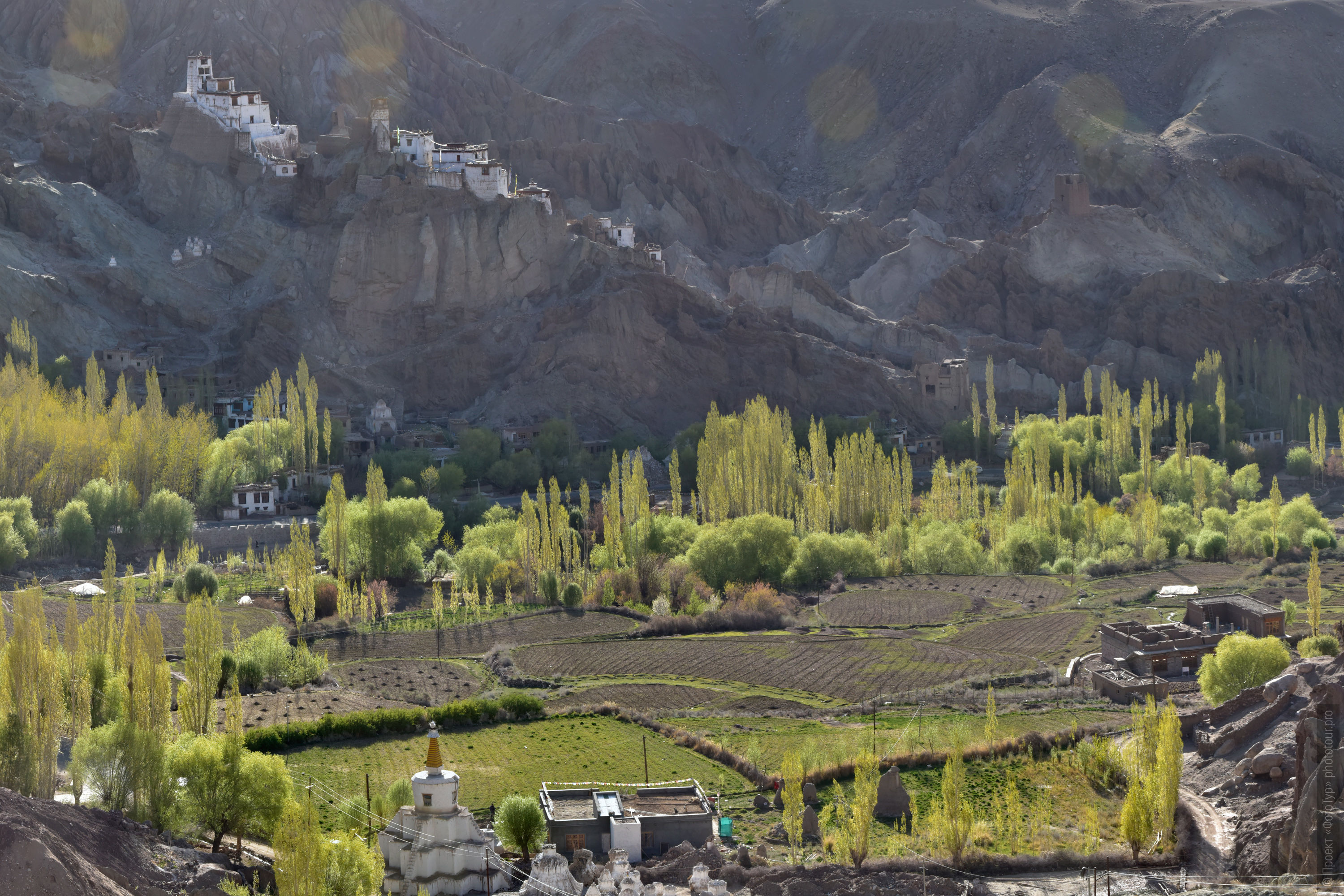
Landscapes in the territory of the protected park of Basgo Gonpa are simply incredible - another word and not found:
the bizarre shape of the cliffs are mixed with the buildings of the monastery, and are interconnected not by paths, but by steep mountain paths.
And in the middle of this rugged landscape - in the hollows of colorful lakes.

It's infinitely beautiful: probably, Basgo Gonpa is still the most unusual Buddhist monastery in Ladakh.
Located Basgo Gonpa in the steep bard rock, the very territory of the monastery - is a completely incredible landscapes.
You can wander around indefinitely.
Than we also will be engaged.
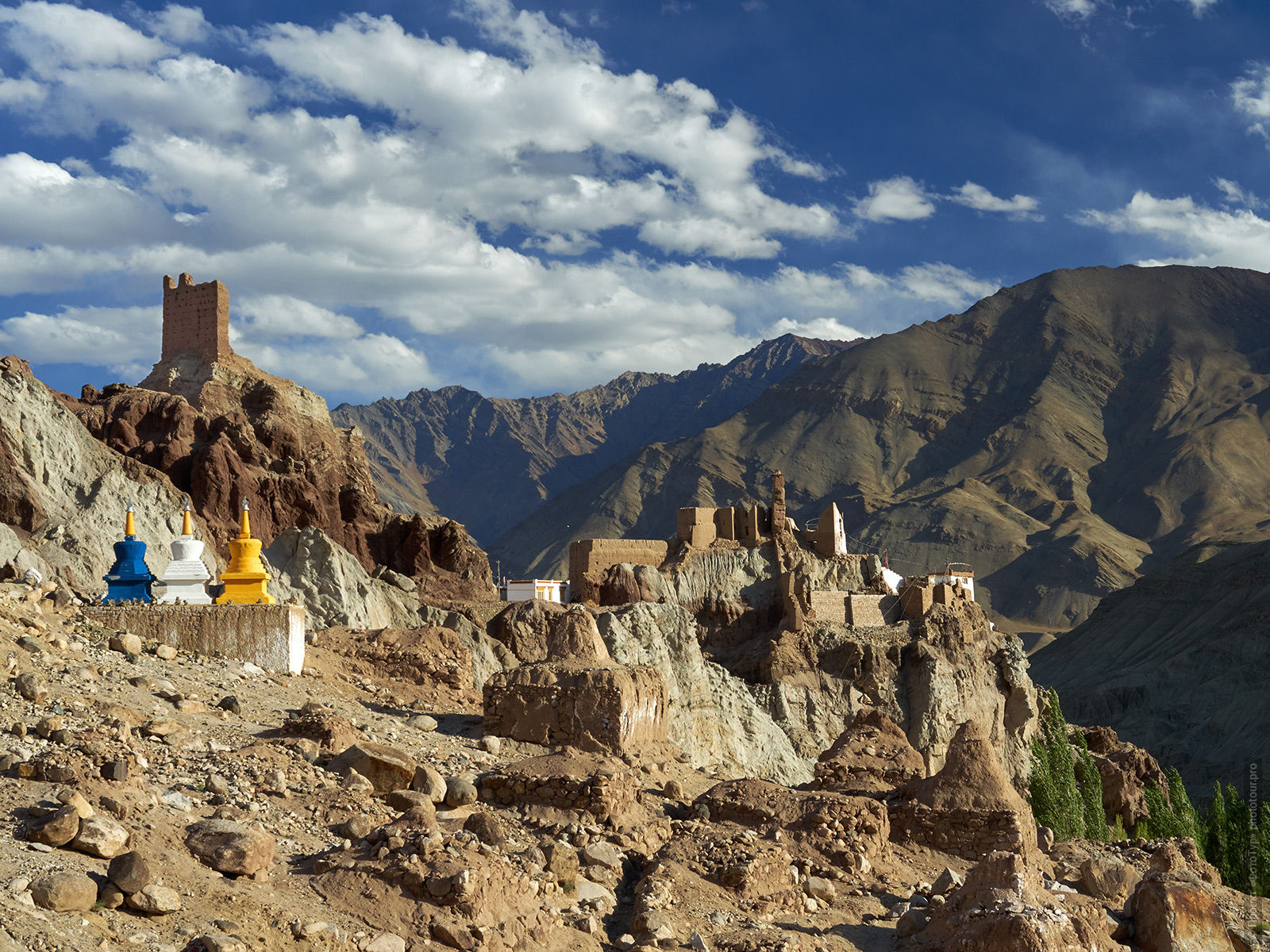
In the evening we leave for the return trip to Lech with numerous stops:
in the evening light the valley of Basgo is especially beautiful.
Hotel in Leh.
Day 3, June 29: Lech-Tangse moving. Lake Pangong, about 180 km.
We rise early in the morning, have breakfast and drive to the lake Pangong Cho.
We are waiting for a stunningly beautiful road upstream of the Indus River.
Near the Buddhist monastery of Chamdei Gonpa we turn off the main road to the left and begin to ascend to Lake Pangong. The road will go to the tops, and from the height we will see the valleys stretching below us with the pictures of the fields.
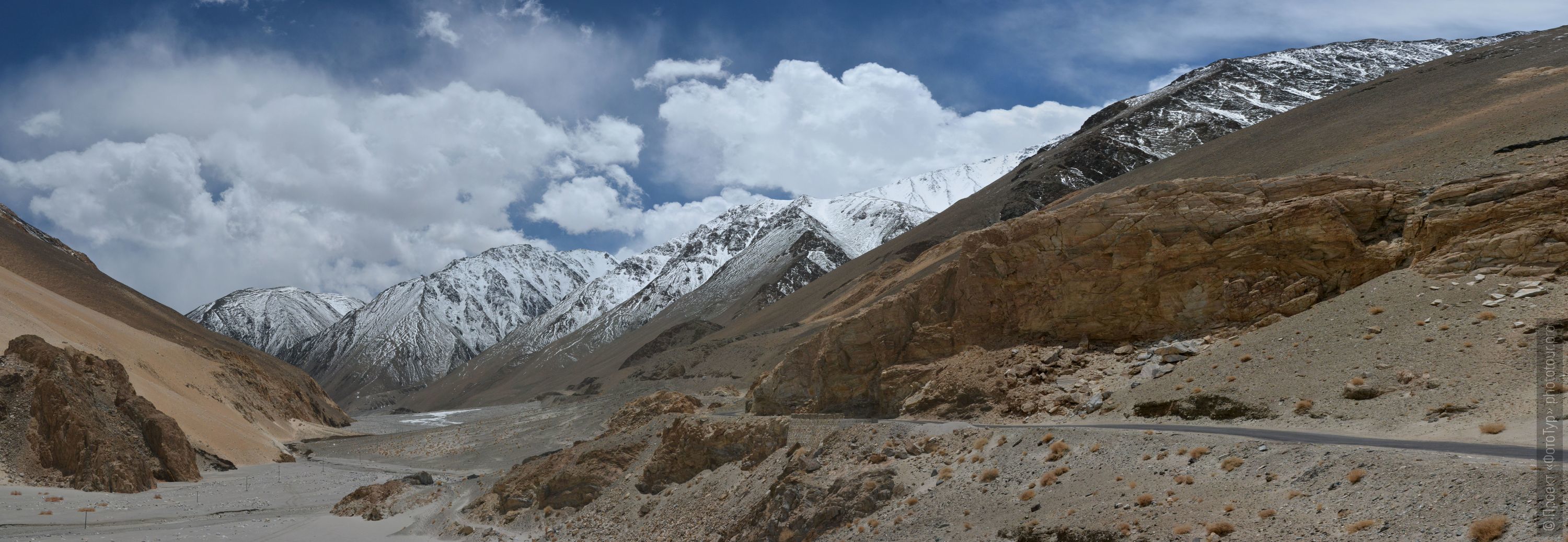
The road will go to the top, and from the height we will see the valleys stretching below us with the drawings of the fields.

The road will reach the Chang La Pass, 5 316 meters, named after the Sadhu Changla Baba, to whom the Hindu temple was dedicated at the pass.
Further, the road will swoop down a beautiful plateau down a beautiful plateau to the small village of Tangst with the Buddhist gon-monastery, which had the same name, bent among the rocks.
We stop for a while in Tangsa, we throw our things into the guest house and go further - on our first date with Lake Pangong Tso.
A kilometer in front of the lake is provided with a stop in the clearing, where there are a lot of manual marmots - this is a Tibetan marmot, you can take pictures of them from a short distance.
Lake Pangong is located at an altitude of approximately 4250 m and is located on the very border with Tibet.
The length of the lake is 134 km, width is 5 km. Lake itself is 1/3 owned by Ladakhu (India) and 2/3 by Tibet (the Tibetan territories now under the occupation of China).
A magnificent evening on Pangong: regardless of the weather, all the evenings on Pangong are magnificent.
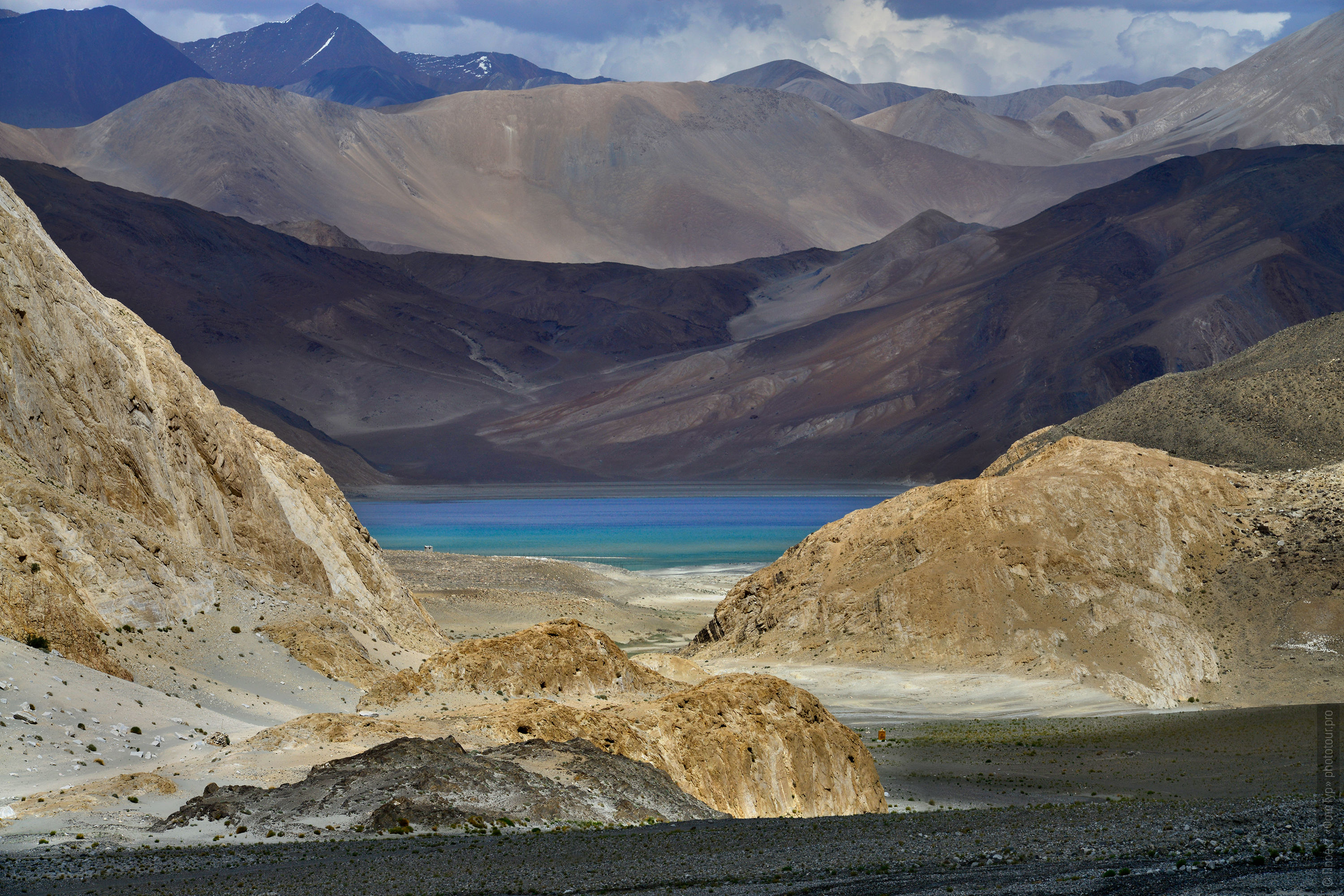
Guest house in Tangsa.
Day 4, June 30: Sashikul Gustor Festival in the monastery Sasikul Gonpa. Pangong, about 60 km.
The next two days we will spend in the very ancient (12th century) Buddhist monastery Sashikul on Buddhist mystery Sashikul Gustor.
Dance Tsam: Dance of Buddhist lamas of high dedication in the Masks of Divine Enlightened Entities from the Bordeaux space.
About Dancing Tsam can talk endlessly, this is an incredible action, one of the most powerful energy phenomena on our planet.
And this is a very colorful, unusual action, which always gathers local residents from the nearby villages.
There will be everything: from the kids running along the site of the monastery among dancing lamas to grandmothers, in full Tibetan attire, where only one headgear weighs about 17 kilograms.
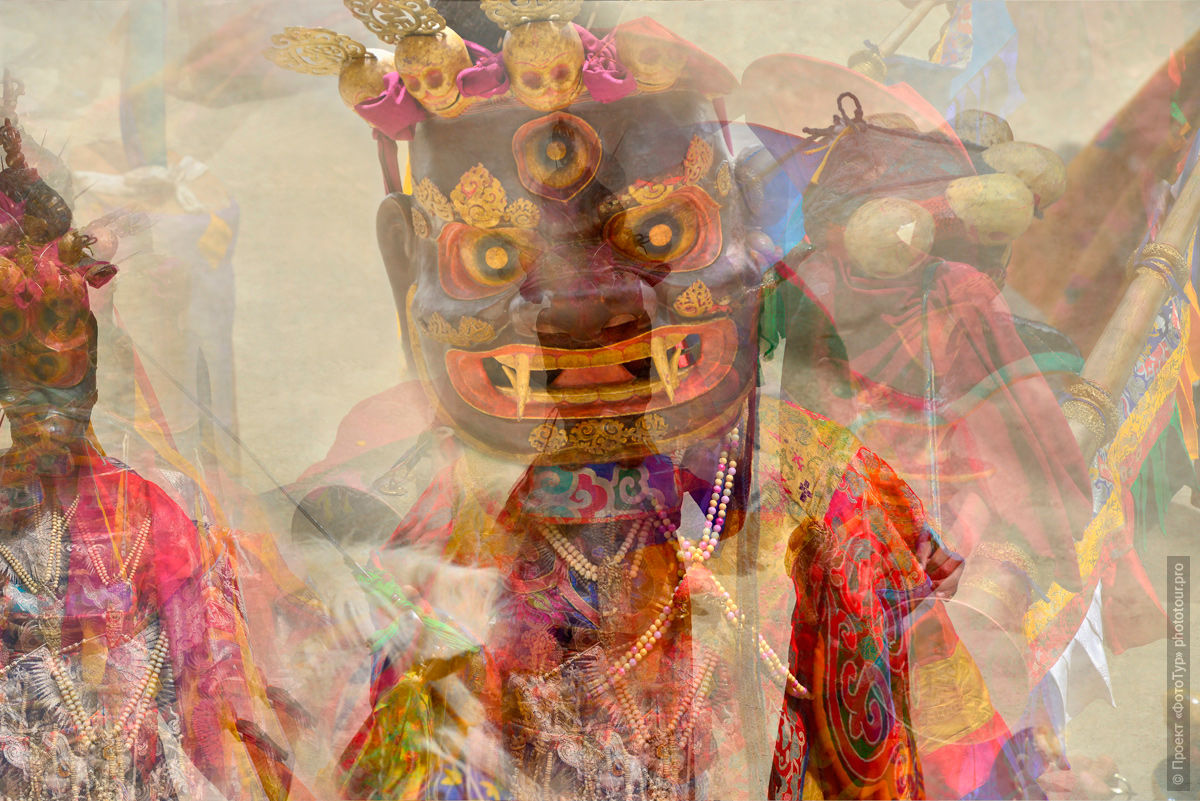
Dance Tsam is an unthinkable, very bright kaleidoscope of images, states, emotions.
Yes, this can be told, but it's better to see it with your own eyes one day.
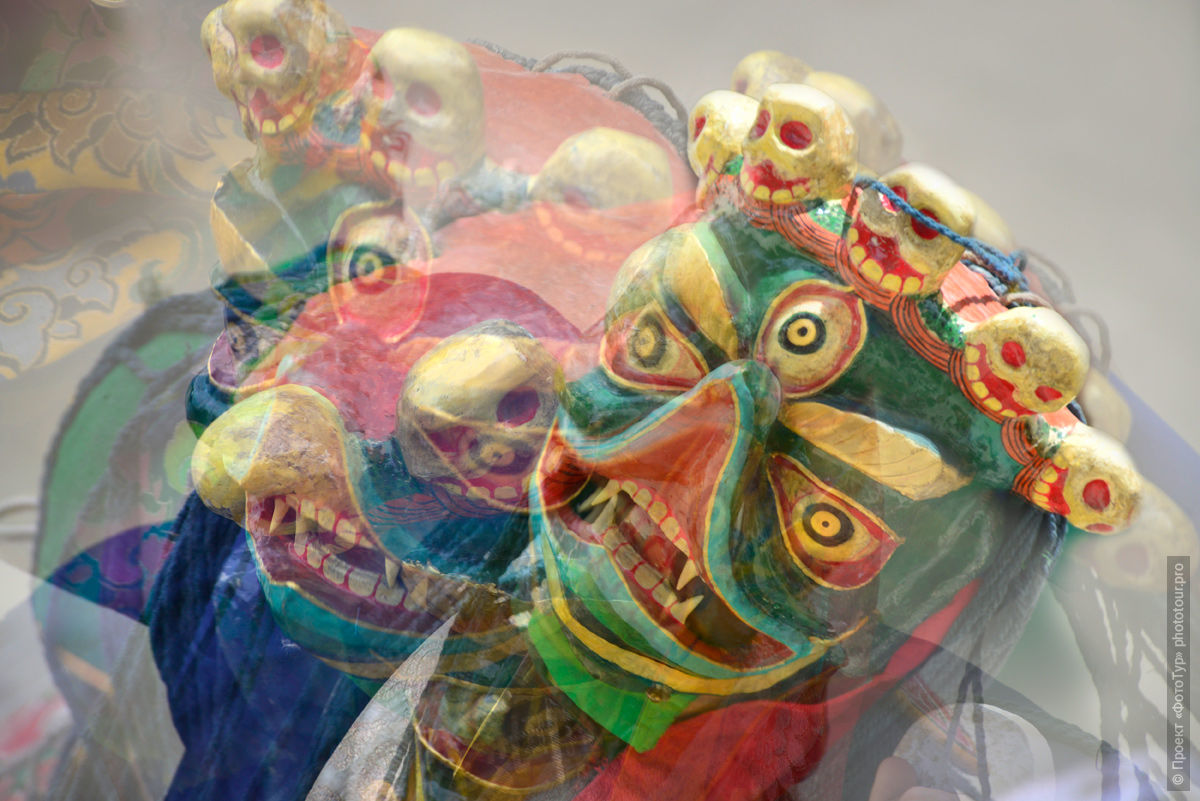
And in the evening - a trip to Lake Pangong.
We will travel here all three days, but each time - in different places, and in each of these places the lake Pangong Cho really is unique from itself.
You can see the photos taken at Pangong Lake here: Lake Pangong Tso, Ladakh, Lesser Tibet.

Guest house in Tangsa.
Day 5, July 1: Sashikul Gustor Festival in the monastery Sasikul Gonpa. Tangse - Leh, about 200 km.
Our morning will begin again on Lake Pangong, this time on its southern shores-endings, where the lake gently pours out blue puddles to meadows full of herbs.
Here you can wander along the water between the shallow islands, it's quiet and peaceful.
The name of Lake Pangong Tso can be pronounced very differently.
For example, one of the variations sounds like Bangong-tso and is translated as a lake of tall meadows or a long ocean of divine area.
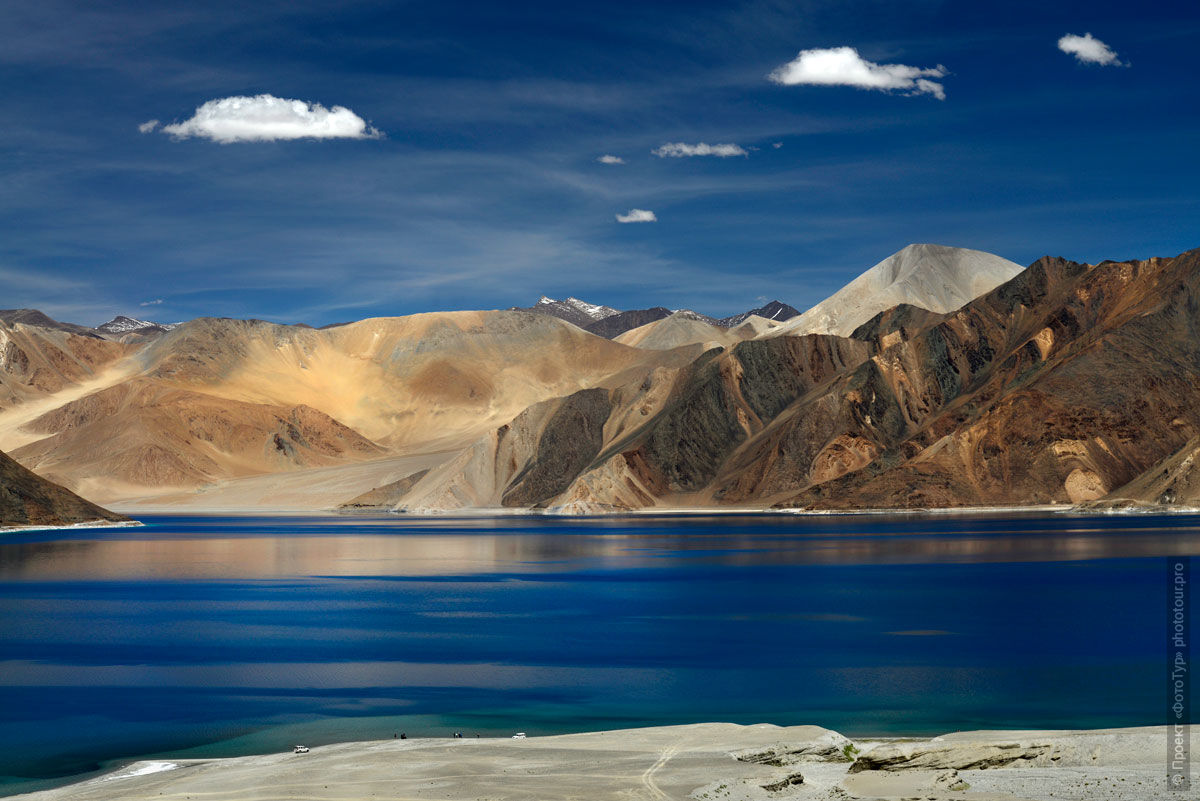
And then we go to the monastery Sashikul on the second day of Buddhist mystery Sashikul Gustor.
.jpg)
After the end of the Buddhist festival - the return trip to Lech, as usual - with numerous stops.
Late in the evening we arrive in Leh.
Hotel in Leh.
Day 6, July 2: Day of free photography in Lech. Old city.
Today we wander and photograph in the old Lech:
narrow streets pass between houses, whose age is estimated several centuries,
Inside the houses you can go in - everything has been preserved without any changes - so much can be found here.
A lot of genre photography.
Hotel in Leh.
Day 7, July 3: Leh - Lake Kyagar Tso, Lake Tz Moriri, Karzok village, 252 km.
And we again go to a distant and rich in impressions road, now - upstream the Indus River.
Today we are waiting for a meeting with the high-mountain lake Tso Moriri, we will have a beautiful and long road with stops:
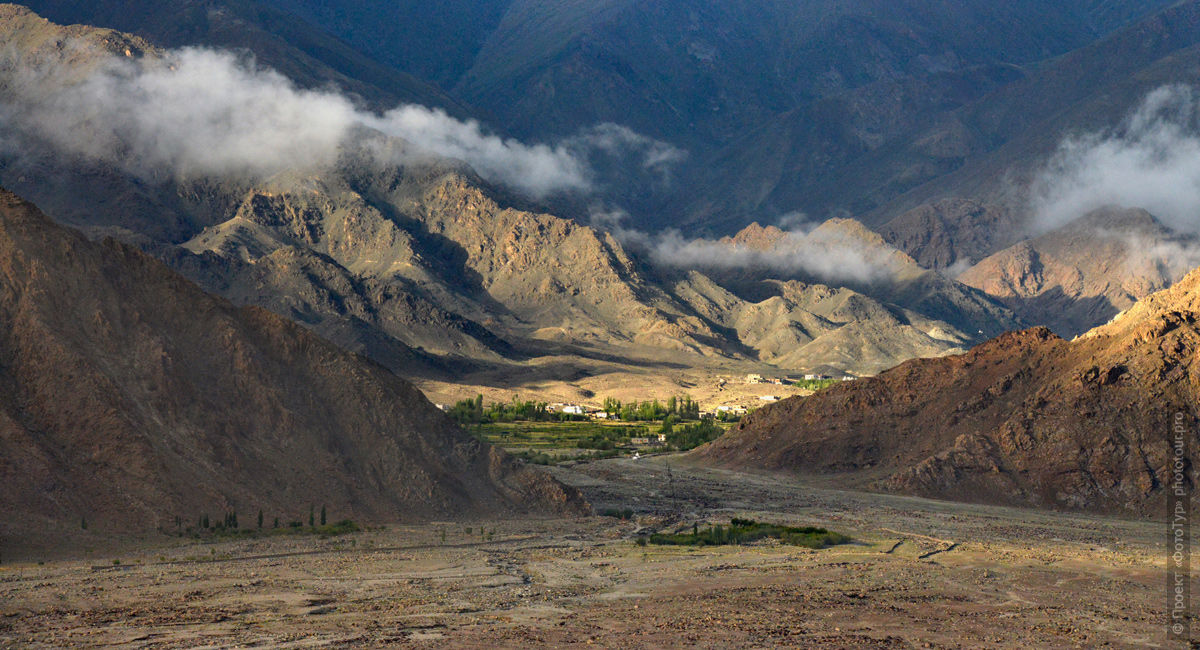
The nature here is so beautiful that it is impossible not to stop at least for a while.
At one of these stops we will have a picnic lunch in the nature of the river Indus.
Further we will cross the Yalung Nyalung pass (5450 m) and the dusty Rupshu plateau.
From the pass we will see a view of Lake Kyagar Tso (Kyagar Tso), an uncontrollably blue color, like the precious eye of aquamarine in the rim of the brown shores.

And after another 17 kilometers - a long-awaited meeting with Lake Tso Moriri.
Tso Moriri, Tsomoriri, Tso Moriri is the largest highland lake of Indian Tibet, 215 km southeast of Lech at an altitude of 4,595 m above sea level.
The maximum length of the lake is 19 km, the maximum width is 3 km, the maximum depth is 40 m.
This is the largest high mountain lake in the trans-Himalayan region within India.
The water in the lake is slightly salty. The lake is only available in the summer season.
Until 1959, local residents were engaged in the extraction of salt (czokar, in the local language of Ladakh) from the lake.
On the shore of the lake is the Monastery of Karzok Gompa and the village of Karzok with the same name, where we are heading.
You can see the pictures taken at Lake Tso Moriri here: Lake Tso Moriri (Tz Moriri), Small Tibet.
Lake Tso Moriri is a beautiful remote quiet place.
In windless weather, Tz Moriri shakes her mirrors:
the world really becomes double, dual and this duality of the surrounding reality is felt literally physically.
Sunset evening mirrors on Tso Moriri are simply delightful.
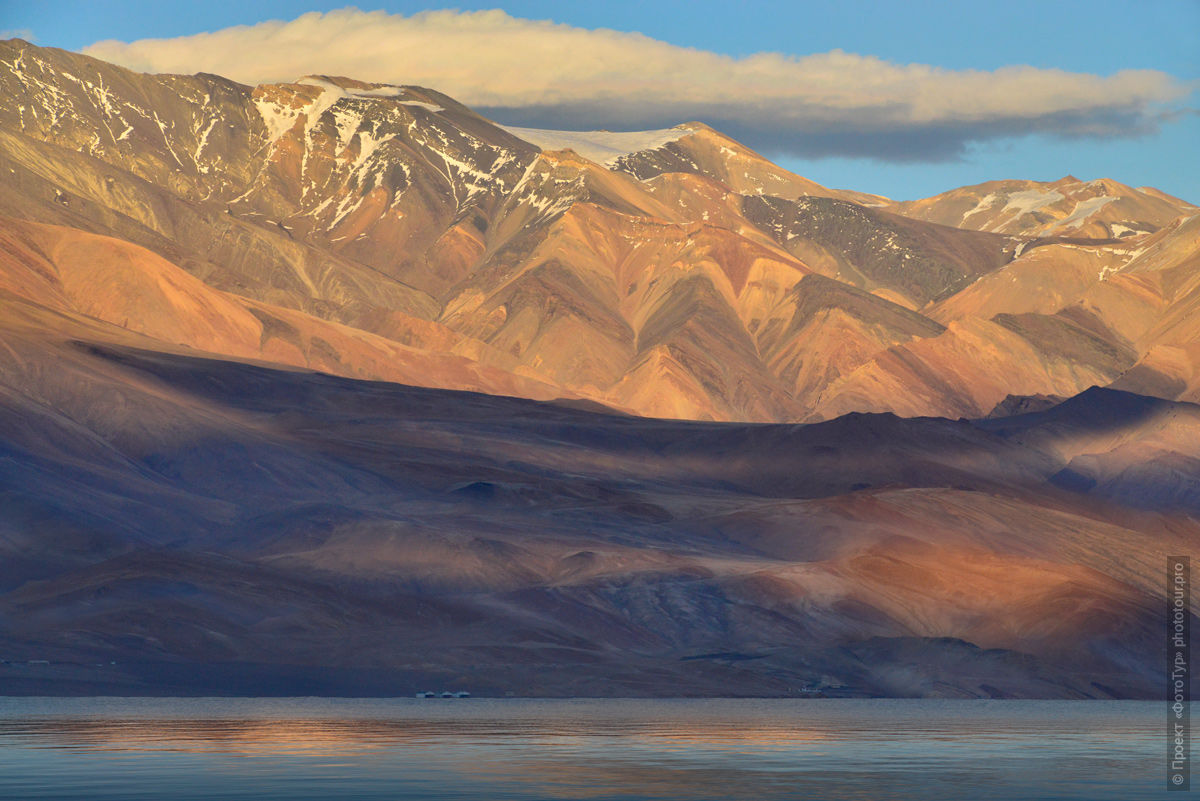
Evening walk along the lake Tso Moriri, dinner in a mobile restaurant near the nomads, evening puja in the Buddhist monastery Karzok Gonpa.
Hotel in the village of Karzok.
Day 8, July 4: The village of Karzok. Lake Tso Moriri. Settlements of nomads ChongPa, about 50 km.
Today we have another busy day.
Early in the morning, we meet the dawn on Lake Tso Moriri on the opposite side of the village of Karzok on the shore of Lake Tso Moriri - there are a lot of interesting places for photography:
along the edge of the lake that are small puddles-pools, in which there is always a mirror image of the bowl of the mountain-hulk Tso Moriri:
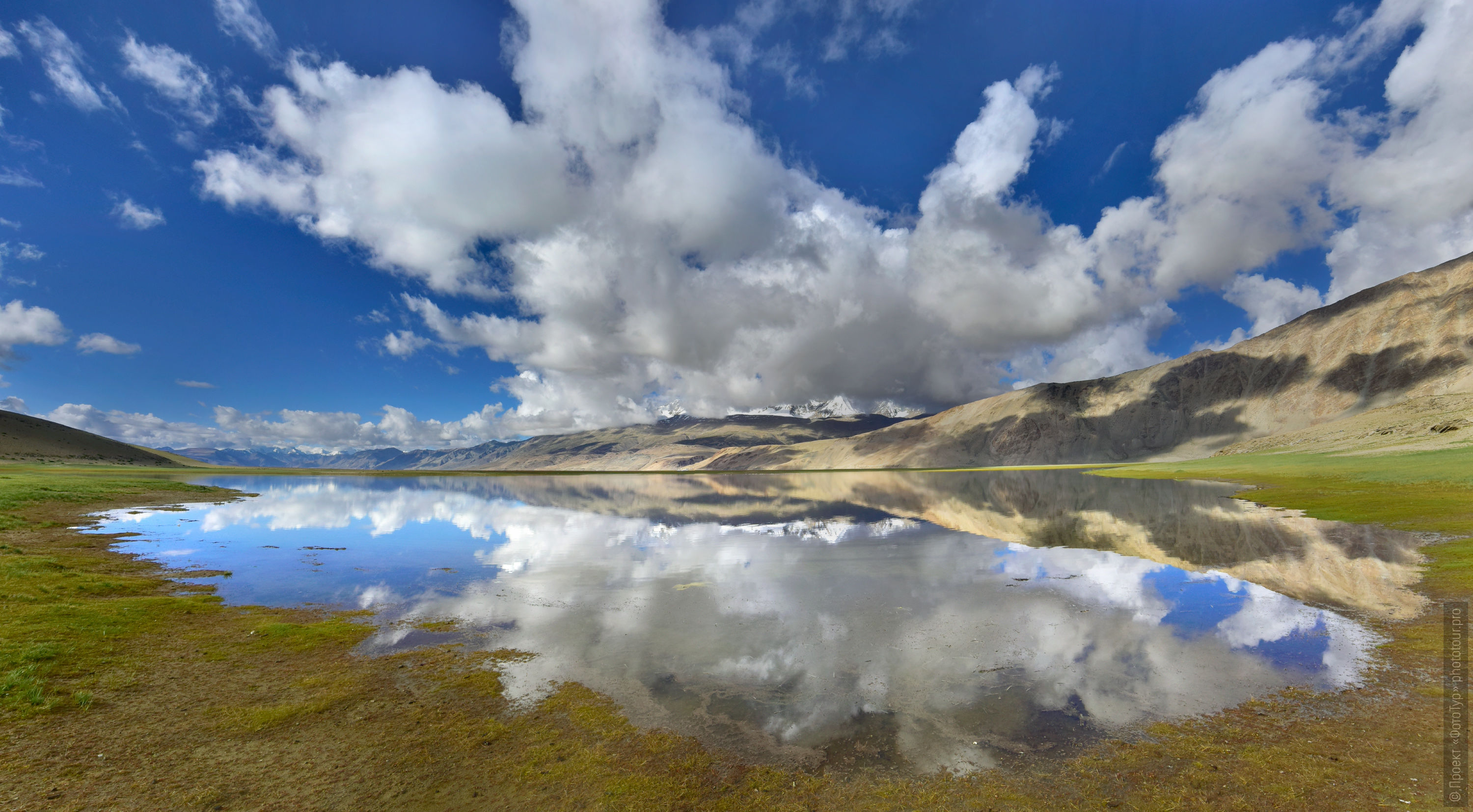
Then we go to the gorge Korzok Fu - summer pastures of the shepherds Chongpa from Korzok.
And we will photograph in the villages of nomads ChongPa:
there will be a lot of genre photography, the nomads are always interested, including one can wander among the huge Tibetan yaks, drink tea in mobile homes of nomads, shoot children and much more.
For the evening plans can be the most diverse, landscape photography of the lake from various points, for example:
Photographing Lake Tso Moriri from the observation deck over the village of Karzok.

If there is no wind, then you can go down to the Tso Moriri floodplain and photograph the mirrors from the water.
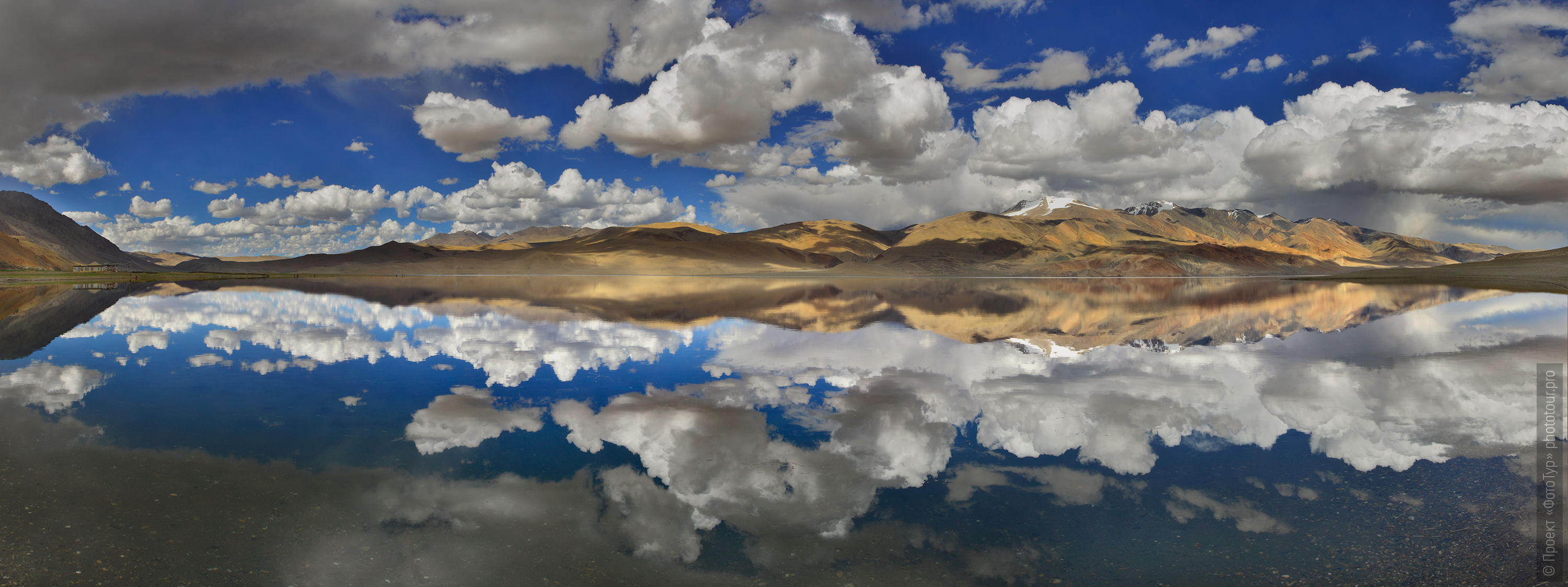
And let's hope that we will be lucky and we will get during our photo tour in stormy weather.
Thunderstorms on Lake Mor Mori are simply amazing for taking pictures.
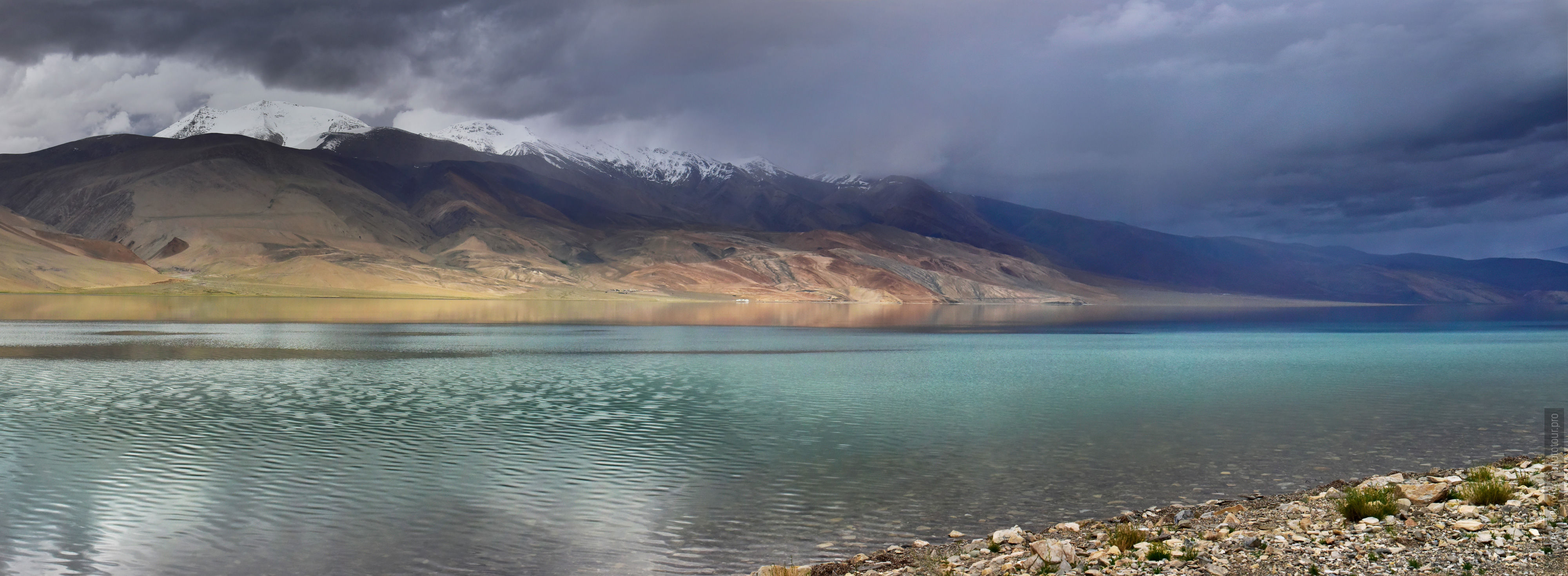
Hotel in the village of Karzok.
Day 9, July 5: Lake Kyagar Tso. Valley of high-mountain geysers - Lake Tso-Kar, 60 km.
Early in the morning we go further along the route of our photo tour:
We only need about 60 km to pass this day, but we will spend about 6-7 hours on this route and there are several reasons for this:
1. Morning photography at Lake Kyagar Tso: just 17 km from Lake Tso Moriri there is a beautiful lake - Kyagar Tso, we saw it on the road to Karzok.
Our first stop on this day is here - for the morning photographing, we will wander along the shores of the lake with cameras.
2. On the road, we are waiting for a lot of interesting places for photography - from ethnographic photography in nomad camps to macro, animalistic and, if there are right clouds - landscape photography.
3. Valley of Geysers. Yes, it is on the road from Tso Moriri to Tso Car that we will visit the unique high-mountain valley of geysers, located at an altitude of about 4500 m.

Geysers here are very different: from small-gurgling huge bubbles to incandescent fountains-geysers with a height of more than three meters.
The Valley of Geysers in the literal sense of the word is absolutely fabulous place:
Here the climate changes sharply under the influence of hot springs and in the middle of the alpine desert of Ladakh there suddenly appear green alpine meadows interspersed with salt marshes, the slopes acquire the brightest colors.
Yellow - yields of crystalline sulfur, among which are hidden transparent ammonium crystals, brown, green crusts of salts.
The main thing is that we are lucky with the weather and then you can take photos in the valley of the geysers indefinitely: birds that live in huge numbers on the banks of the valley, small gurgling springs - very texture photographs are obtained, and, naturally, geysers-fountains.
In the sources you can also swim, and not only you can, but the springs are considered healing, so do not forget to take with you to the tour bathing suits.
The geysers themselves give beautiful bright pictures - pictures.

Closer to the evening we come to the lake Tso Kar, we are located in the camping hotel and go to the evening photography for Lake Tso Kar.
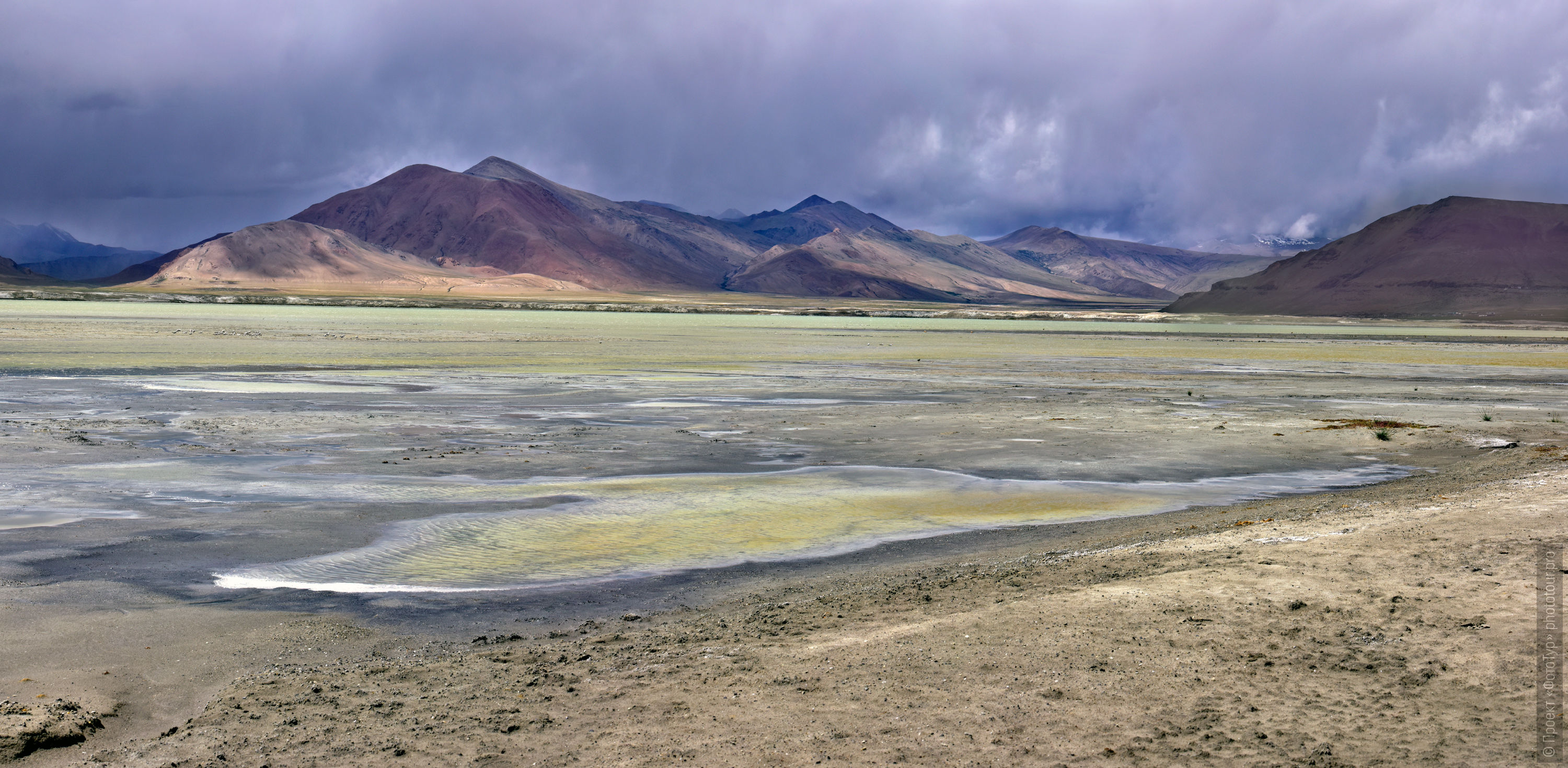
The camping hotel on Lake Tso Kar.
Day 10, July 6: Lake Tso Car, Lake Tso Startsapuk (Tso Startsapuk), about 40 km.
Day of free photography on the lakes of Tso Kar and Tso Startsapak:
The first part of the day is photographed on Lake Tso Moriri, after lunch we go to Lake Tso Startsapak.
The first part of the day at Lake Tso Kare:
on cars we ride around the lake, we search for the points of photographing, morning photography, visiting Gompa Tso Kara, and, finally, animalistic photography:
near the lake grazing herds of yaks and herds of wild horses that are approaching to themselves very close.
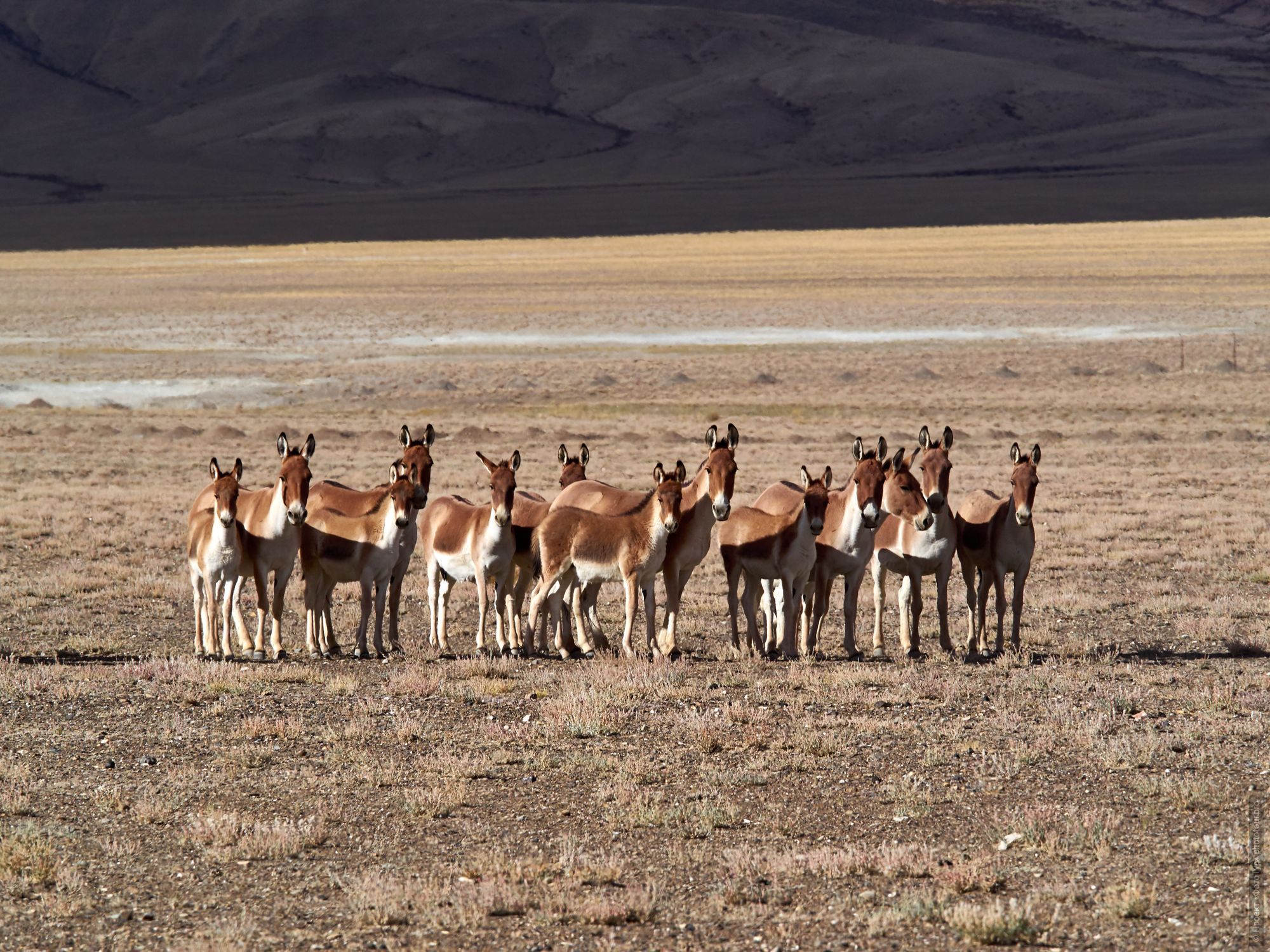
Lake Tso-Kar - perhaps the most charming of the lakes of Lesser Tibet.
The epithet "beautiful" - here not absolutely that, Tso-Car is especially charming: soft paints, half-tones, closed miniature, water color of paints surrounding mountains of a lake, calmness-rest.
The word "Tso-Car" literally translates as the White Lake. This lake is named because the salt and all its banks are covered with whitish deposits of salt.
Lake Tso Kar - is located 150 km southeast of Lech in the Rupshu Valley at an altitude of 4700 m.
From the height of Tso Kar looks like this: to the left - actually Tso Kara himself, and to the right - Tso Startsapak.
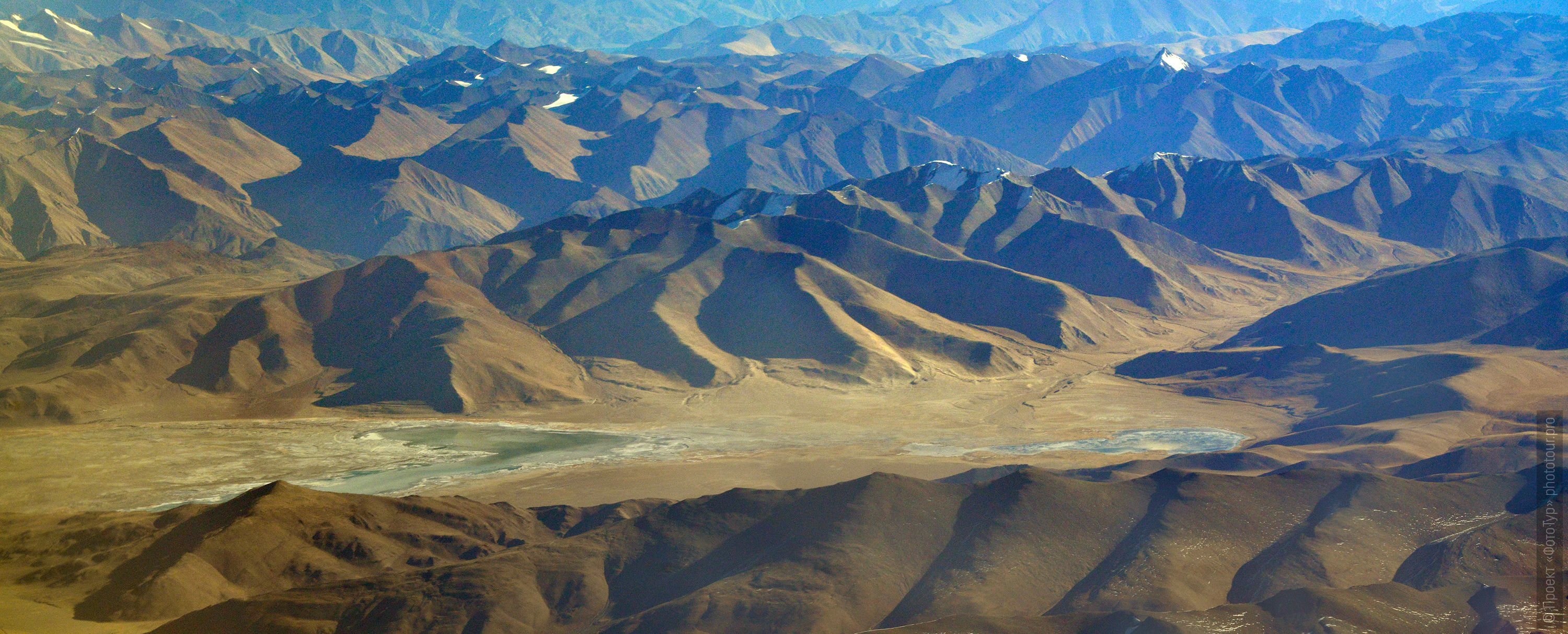
Tso Kar is very capricious and very diverse in all its manifestations:
from the weather, which can change here every half hour to landscapes - here and the smooth water with reflecting mirrors, and colorful solonchaks, and winding channels of the channel connecting the different parts of the lake.
You can see the photos taken at Lake Tso-Kar during our travels here:
Lake Tso Kar, Rupshu Valley, Lesser Tibet.

In the afternoon we go to the lake Tso Startsapak, there is a very good light in the afternoon.
The history of our discovery of this lake is amazing: the lake itself is on the map, but it was not immediately possible to find the way for it - there is no road as such for a long time, nobody uses it for many years.
We ourselves first came to the lake Tso Startsapak in 2014 and were literally fascinated by it:
just 10 km from the snow-salted Tso Kara we met with the green, gentle and affectionate beauty of Tso Startsapak.
On the way, we stop for photography in the abandoned nomadic villages of Chongpa.
On the way to Camping - evening photography at Lake Tso-Kar.
The camping hotel on Lake Tso Kar.
Day 11, July 7: Lake Tso Car - Rupshu Valley - Tanglang Pass La Rumce (Bordovoye Gorge).
At will - an independent morning photo shooting on Lake Tso-Kar and after breakfast we leave for the opposite way to Leh.
We are waiting for a very interesting and rich in landscapes and panoramas high-altitude road.
We will ascend to the second highest pass in Ladakh - Tanglung La (5358 m), and from the height we will see the high-mountainous dusty valley of Rupsh.
Photographing in the dusty Rupshu Valley and at the second highest pass in Ladakh, Tanglung La.
View of the Ladakh valley from the Tanglung La Pass.
It is on this road that we will go down.
For lunch we go down to a height of about 4 000 in a small village of Rumce.
The place here is very atmospheric:
the village of Rumce is located at the very entrance to the Bordovye Gorge, against which the white stupas and small houses of the village look strikingly bright.
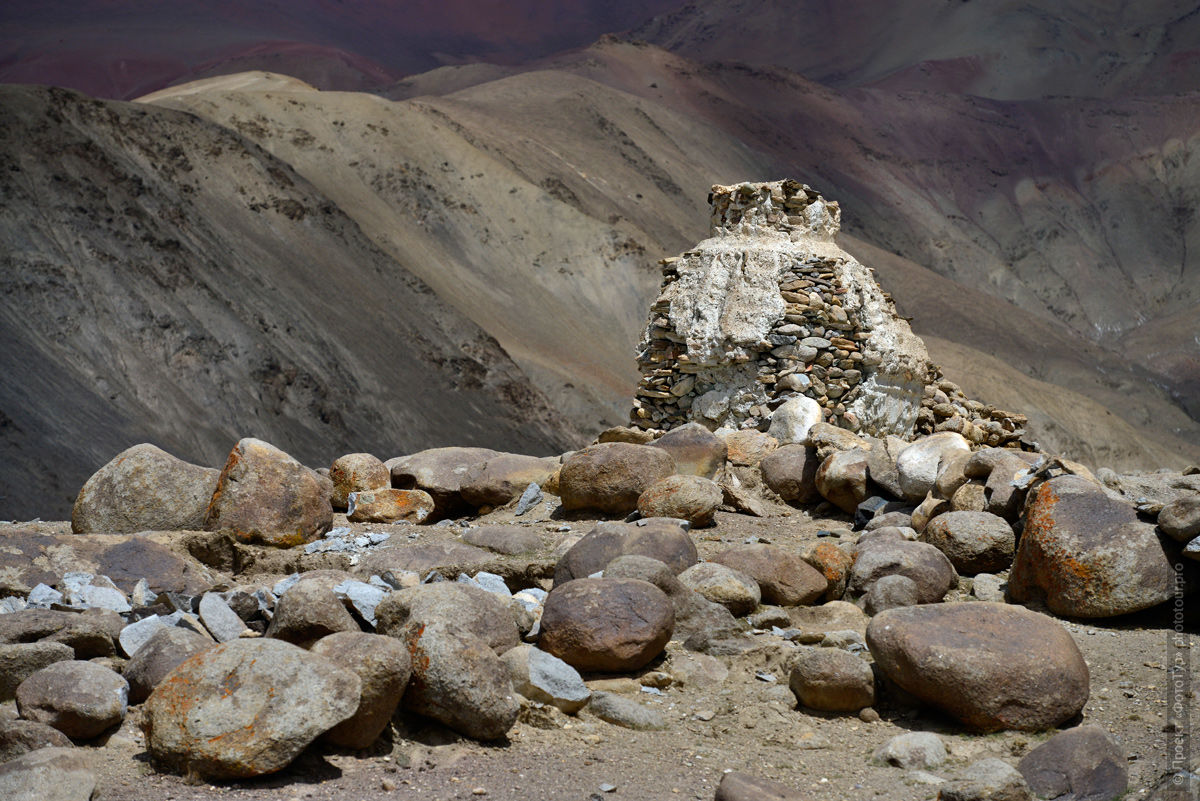
And already quite at the end of the day - Bordovoe Gorge, the South Gate into the valley of Ladakh and another of the local wonders:
here mountains are really bright-burgundy colors and mountain layers, like mad, escaping from the depths of nature, stand on their hind legs.
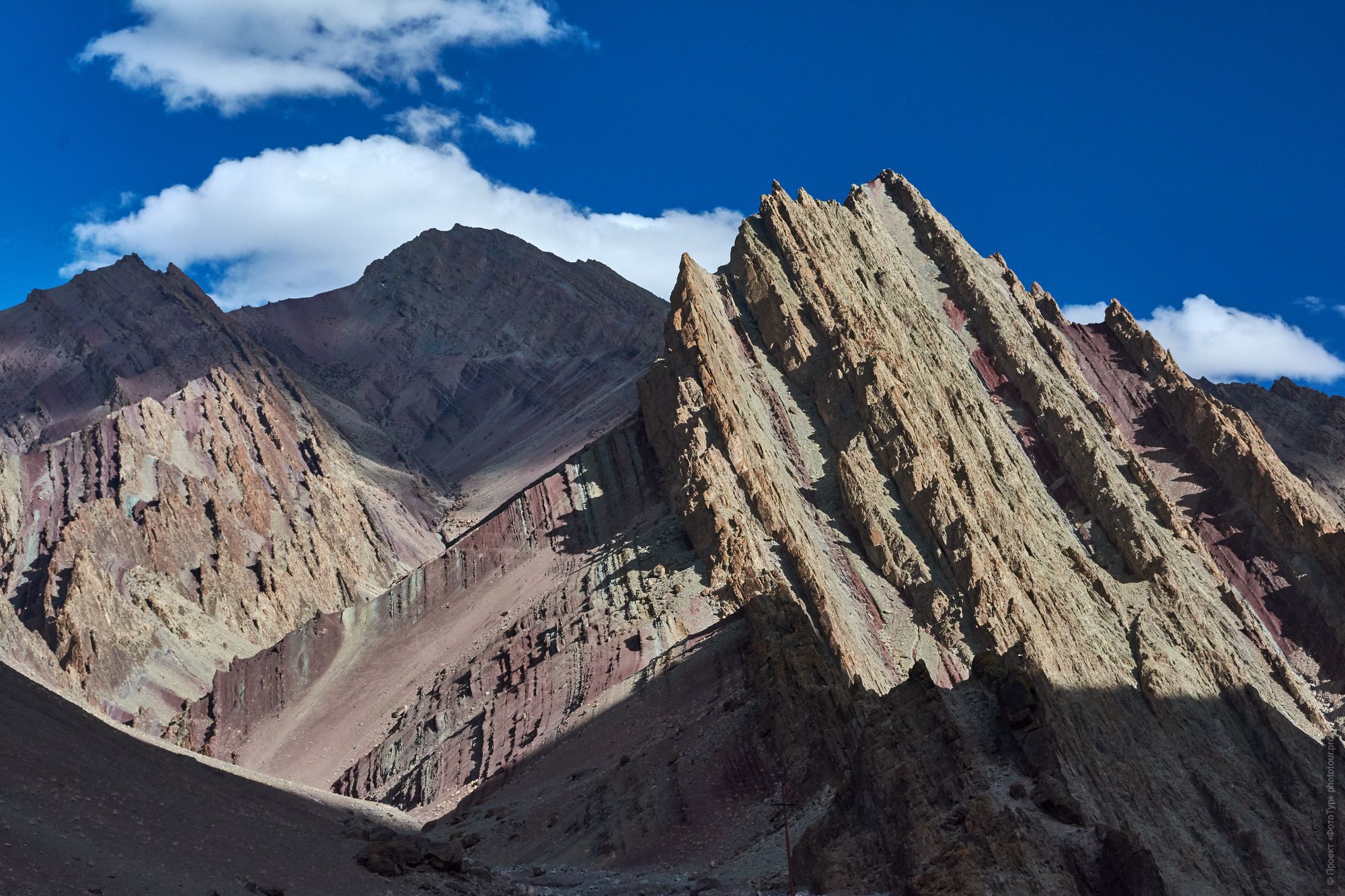
In the evening we arrive in Leh.
Hotel in Leh.
Day 12, July 8: Flight of Leh - Delhi. Homecoming.
Early in the morning transfer to the airport and the flight of Leh - Delhi.
And again the Great Himalayas will examine us through the windows of the plane.
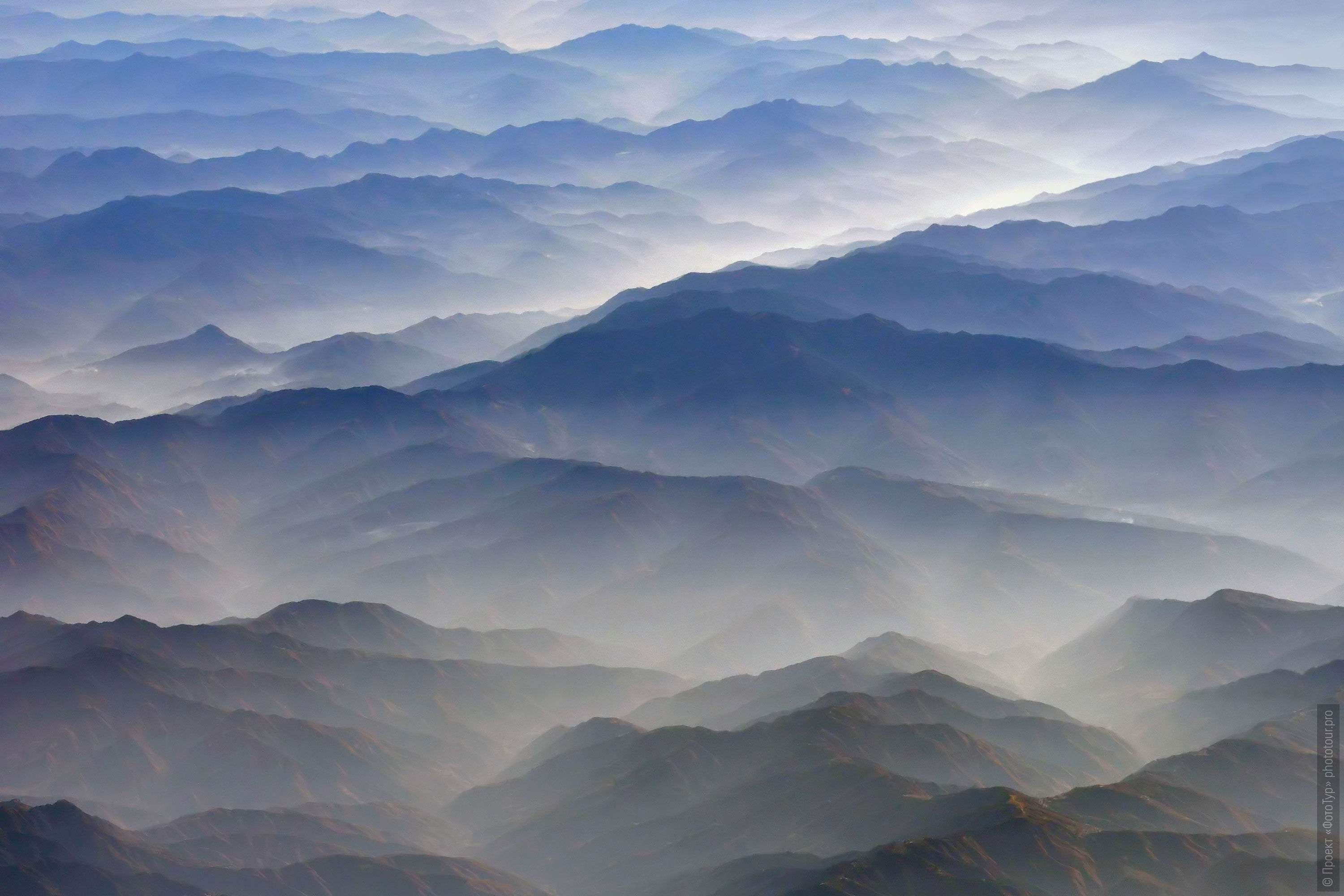
On arrival in Delhi, you can tour the capital of India (on request), transfer to the airport and return to your homeland.
